Infotainment System- The Technology and its Evolution
Gone are the days when the only attractive proposition of a car was its engine under the hood. With evolving technology and a growing number of rivals in the market, brands have made luxury and entertainment one of their top priorities. The infotainment system tops our list in this aspect. It delivers essential information with connectivity and entertainment features.
Published March 20, 2024

The infotainment system inside the cabin provides utility-based information and entertainment to the occupants through button panels, audio/video interfaces, voice commands, and touchscreen displays. The US market for this tech-based system is expected to rise at a CAGR of 11.79% to reach USD 30.47 billion by 2022. In-vehicle infotainment system market growth can be attributed to several aspects, including the anticipated growth in overall automotive production with electric vehicles, technical improvements, and demands for premium vehicles.
How does an infotainment system work?
A companion MCU integrated with the infotainment system handles low-level automotive interface functions such as power management, booting, tactile controls for vehicles, and other functions. It relies on the cabin's layout requirements whether the packaging of the in-vehicle infotainment setup will be integrated with the touchscreen display or deployed separately. Packaging often occupies the IP cavity's center.
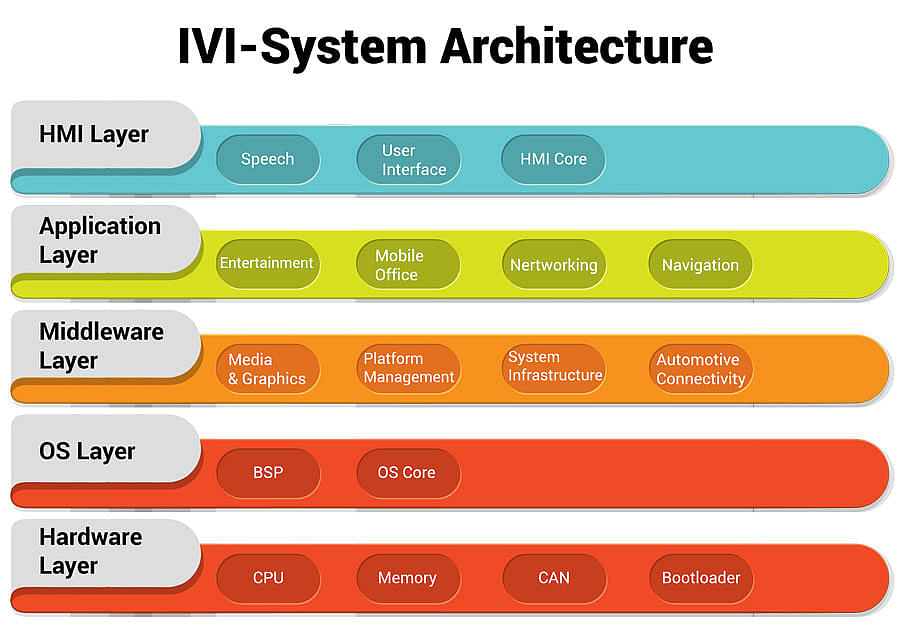
Today’s standard radio systems inside cars are transforming into domain controllers for the cockpit. It connects driver data to clusters and adds heads-up displays with a human-machine interface (HMI) which includes several features like gesture detection, haptics, and speech recognition powered by Artificial Intelligence.
How the infotainment system has evolved over time?
Back in the day, local media included music and recordings in the form of DVDs and CDs used to predominate the automobile’s entertainment setup. Other hard content such as cassettes and antenna-based radio was used to listen to our favorite artists and channels.
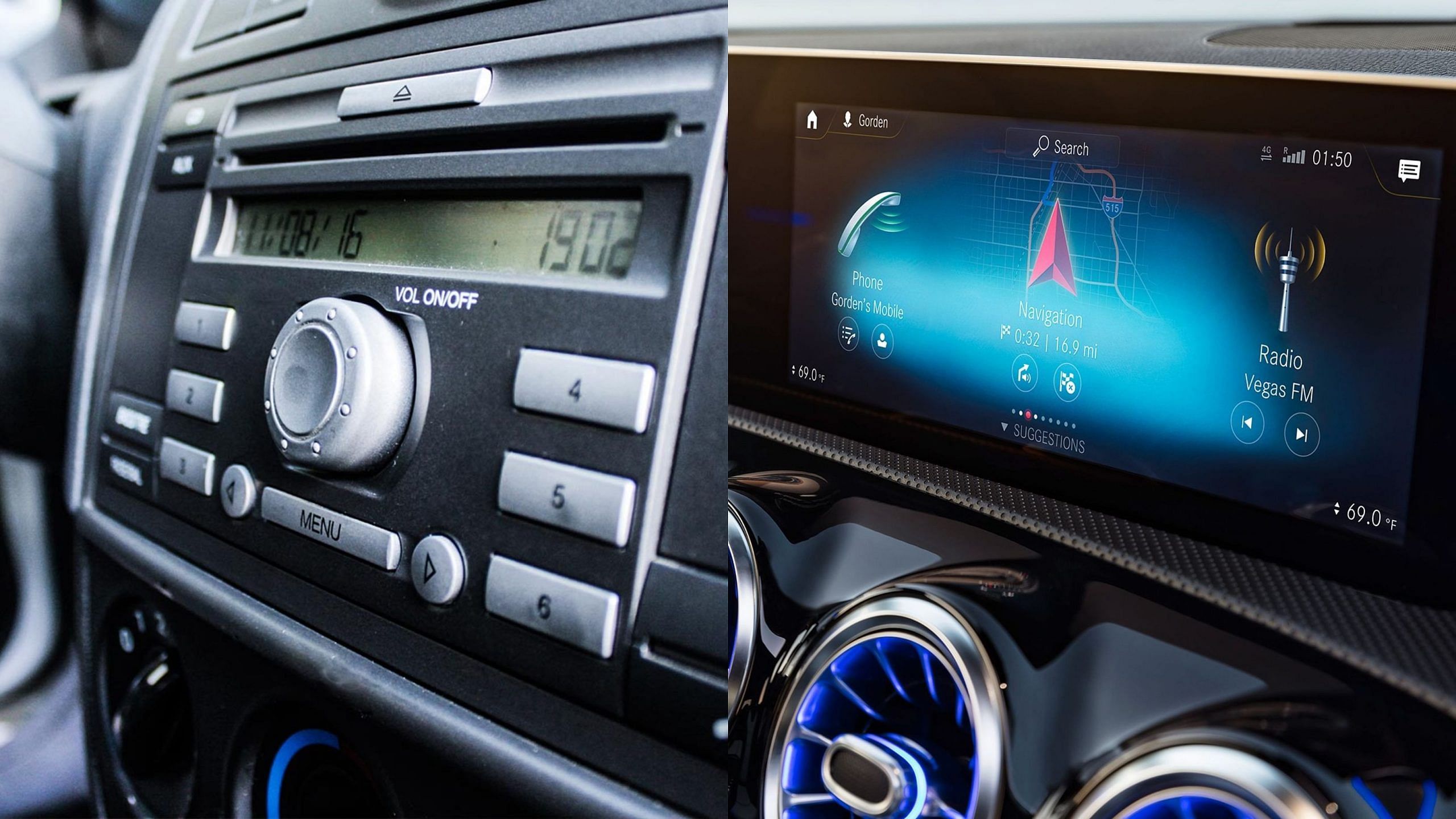
There was almost no driving-related significance of those setups. However, recent technological advancements in broadcasting technologies, like satellite radio, have drastically evolved and upgraded overall audio quality. The regular radio has now become a multifunctional information and entertainment platform that connects with drivers’ and passengers’ mobile devices or cloud-based service providers with a plethora of features like onboard navigation, concierge services, and service portals.
What are the best infotainment systems available for 2023?
1. Stellantis UConnect
Famous automotive brands Chrysler and Peugeot merged in 2021 to establish Stellantis, a new business. The simplicity with which buyers may operate the infotainment system's functions remains to be a concern for many customers when selecting an infotainment system for their vehicle. Stellantis worked on its customer feedback and implemented the new functionalities in the UConnect infotainment system. Most of the customizable features of the UConnect system can be accessed at the bottom of a touchscreen display.

As part of the brand's UConnect system, buyers can choose among touchscreen displays from 5 inches to 12 inches, similar to the vertical screen found in the pickup truck Ram 1500.
2. Mercedes-Benz MBUX
Customers of the Mercedes-Benz MBUX infotainment system have access to 3 different ways to handle their infotainment systems: a touchpad in the center, the touchscreen display, and 2 tiny touchpads on the steering wheel.

The MBUX is more functional as compared to the other infotainment systems available in the market. Thanks to its toggle function and an interactive voice assistant, the brand's in-vehicle software handle all the important functions quickly and with utmost efficiency.
3. Ford SYNC 4
The Ford Mustang Mach-E and F-150 Lightning are new automobiles that come with a standard SYNC 4 infotainment setup. The SYNC 4 system is provided with an 8-inch or 15.5-inch touchscreen display.
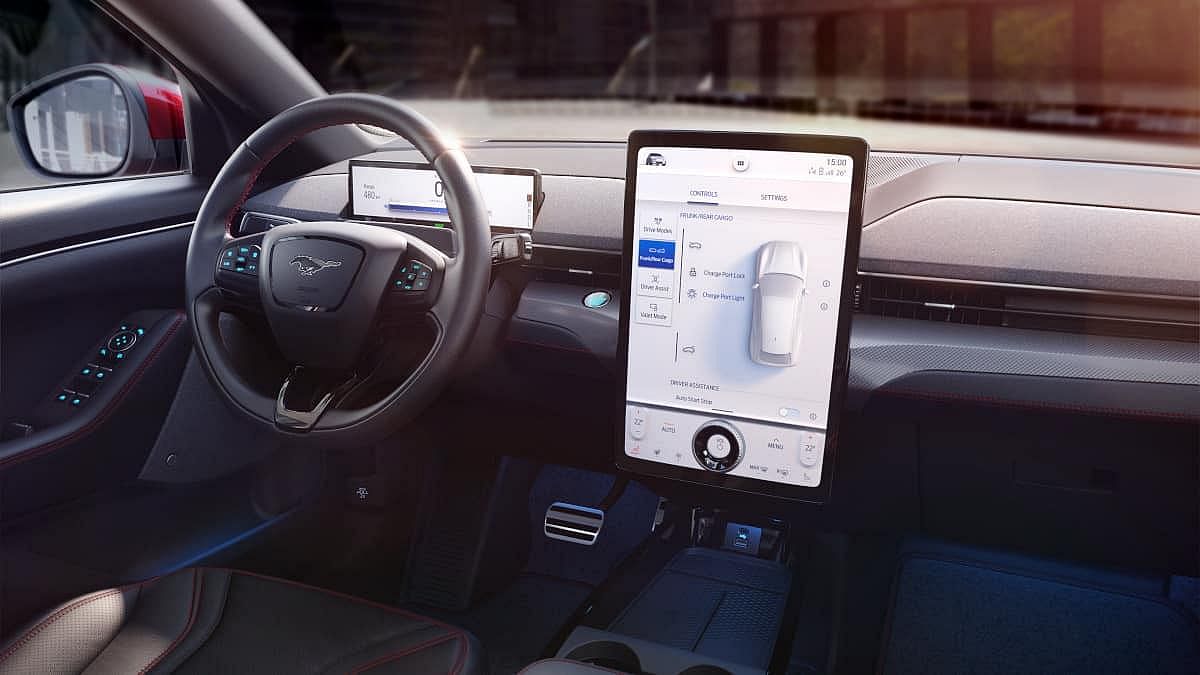
The system automatically evaluates the routines of its customers and offers a highly personalized experience to the users as per their preferences. The system comes with all the essential features required in modern days such as wireless Apple CarPlay and Android Auto connectivity, wi-fi hotspot functionality, cloud-based connectivity, natural voice recognition, and over-the-air upgrades.
4. Hyundai Blue Link/Kia UVO
While the South Korean brand, Kia, offers its larger vehicles with a 12.3-inch touchscreen infotainment display and a 10.25-inch digital driver’s cluster. However, the sister company Hyundai confines the display size of its touchscreen on models to just 10.25 inches.
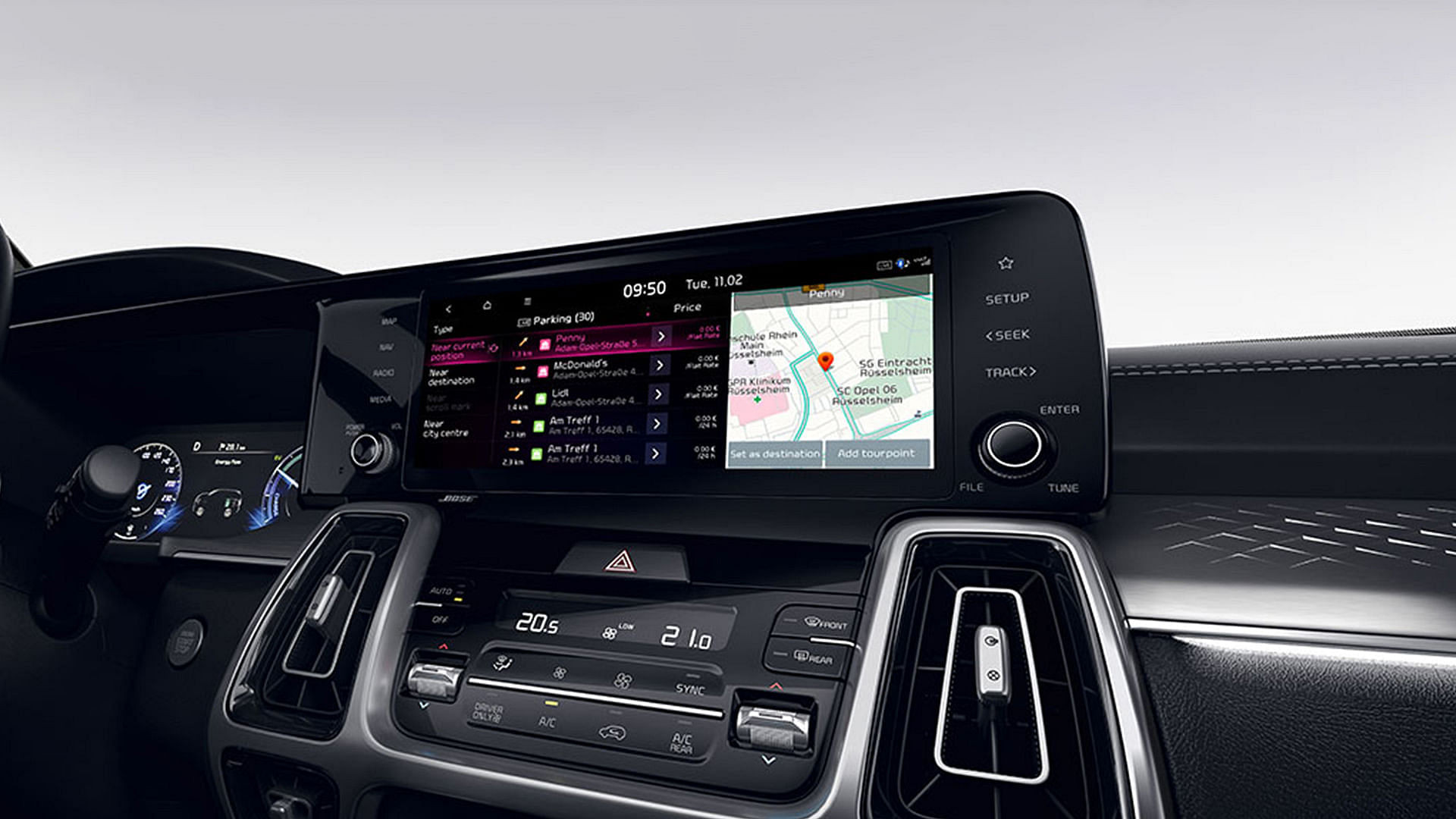
Some car models from Hyundai, in the future, may come up with a 12.3-inch digital instrument display. Onboard wireless Apple CarPlay and Android Auto are both integrated and supported by Kia and Hyundai. Both automobile manufacturers still put hard buttons and switches for most of their available infotainment controls in their cars. However, they might upgrade this to touch-haptic "buttons" in the nearby future.
5. BMW iDrive
Apart from BMW, there are only a few automakers that carry an innovative approach when it comes to their infotainment system. The all-new iDrive 8, the most talked about version of BMW's iDrive infotainment universe, shows the company's aspiration to deliver something new which is not been seen in the market before. With a number of tweaks regulated through artificial intelligence, a computer-generated visage, and natural language understanding, the iDrive 8 system has the ability to give its users accurate and quick feedback through gestures and nonverbal cues. The future BMW iX and i4 EV cars are expected to come with the iDrive 8 but before that, the customers have to wait or pursue the old infotainment system. The current iDrive 7 model is also popular and delivers an abundance of similar features as its successor.

Speaking of the features, the new tactile buttons are now incorporated into the iDrive8 touchscreen infotainment display on BMW cars. BMW's upcoming generation of iDrive software comes equipped not only with onboard wireless Apple CarPlay and Android Auto, but also with voice commands, navigation, rotary controller, and hand gestures. Display screen sizes for the BMW iDrive 7 infotainment system range from 8.8 inches to 12.3 inches. A 12.3-inch digital instrument cluster is expected to be used with them in the future.
6. Mazda Connect
With keeping the utmost safety of driver and passengers in mind, the Mazda Connect infotainment system first came into the car world with the Mazda 3. The system is now a standard feature in almost all new Mazda vehicles. To fight the distraction and let the driver focus on the road while cruising, the brand embedded the infotainment touchscreen deep inside the dashboard. The automaker also provides a utility-based rotary knob which is found absent in many of its rivals’ systems.
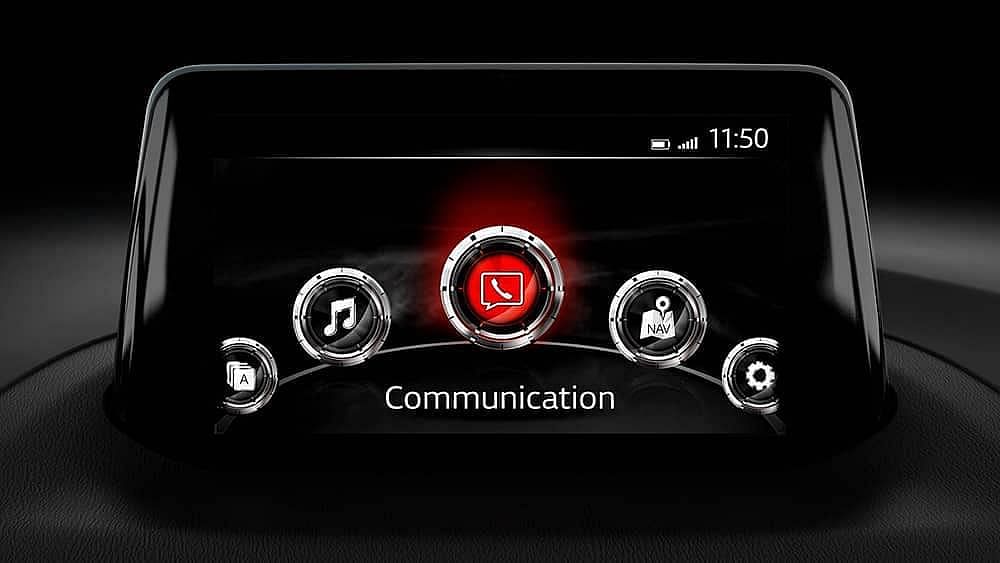
In the past, Mazda vehicles with touchscreen entertainment systems turned their touch capabilities off as you started driving to ensure the driver maintained constant concentration.
7. Volvo Sensus
Like Mazda, Volvo also sought to make its infotainment system as easy to use as possible to increase safety. The Volvo Sensus has a layout similar to what you may find on your smartphone that organizes the used apps in convenient locations and displays useful information accordingly.
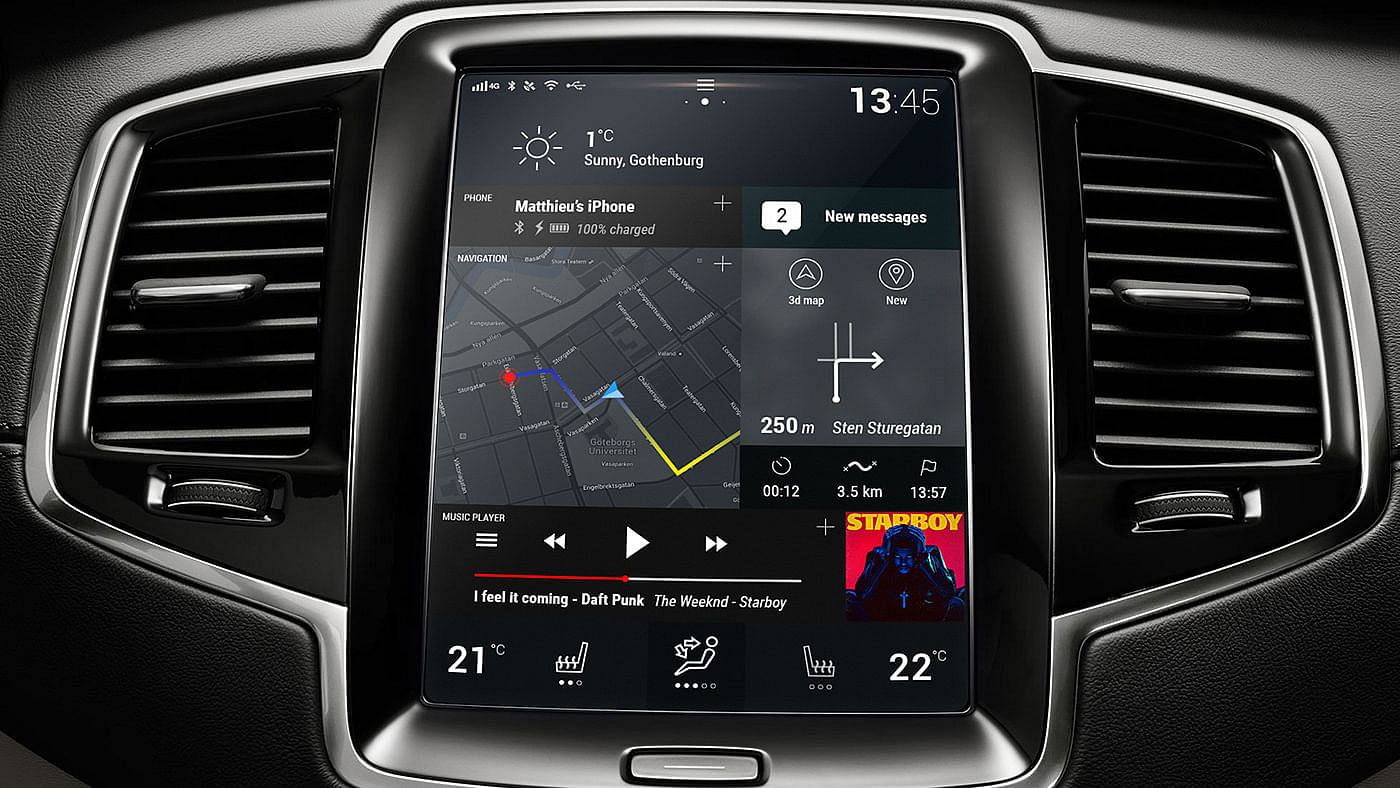
The choice of standard features for Volvo cars is one of the ways it differs from other automakers. A 9-inch touchscreen infotainment display system with wireless Apple CarPlay and Android Auto is standard on all Volvo models. There are also additional options available for the customers, including Onboard navigation, wireless charging, and a larger 12.3-inch digital instrument display.
8. Audi MMI
Audi's MMI infotainment system provides accurate and fast responses to the user’s input. It also has effective haptic feedback. However, the MMI system's Virtual Cockpit technology is where it stands apart from its competitors. The brand’s Virtual Cockpit system has a screen placed above the steering wheel that can be customized to depict any information the driver needs, from playing Maps for navigation to audio data. The Virtual Cockpit screen comes with two display sizes for the Audi Q3 SUV, Q3 Sportback, A3, A4, A5, and A6: 10.25 inches and 12.3 inches, respectively. With a restyled version which was utilized in the Lamborghini Huracan, Audi debuted the MMI system in the 2014 Audi TT with a new name. Wireless Apple CarPlay and Android Auto are standard with all Audi models.
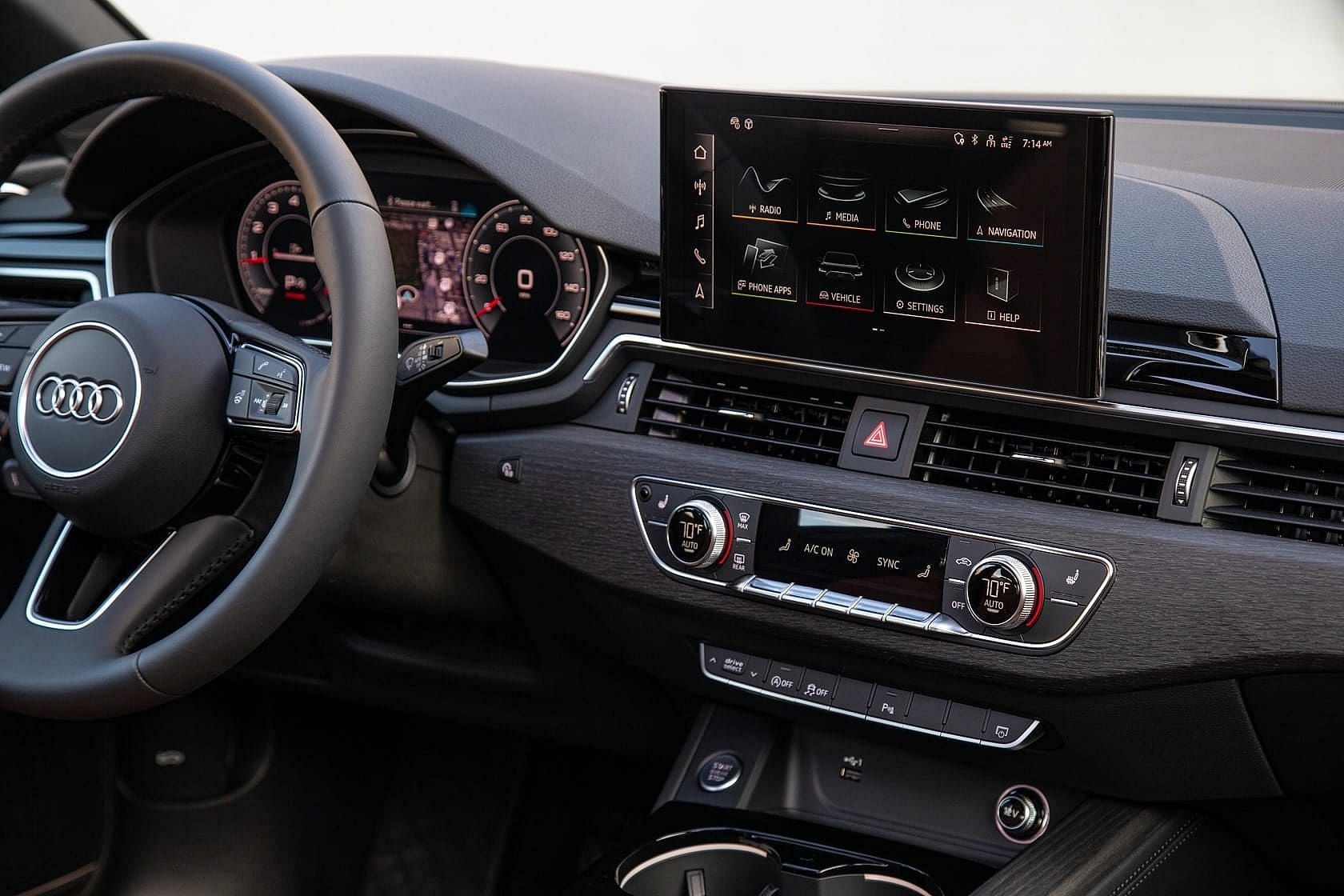
All the above-mentioned infotainment system comes with their own set of specifications and caters to a different kind of audience. We expect these systems to evolve drastically further as the EV market is booming. Down the line, as the dependency of the powertrain on electronics will increase, the dynamics of the infotainment system will gain new features and use cases.
Write a comment
Comments
No Comments Yet









